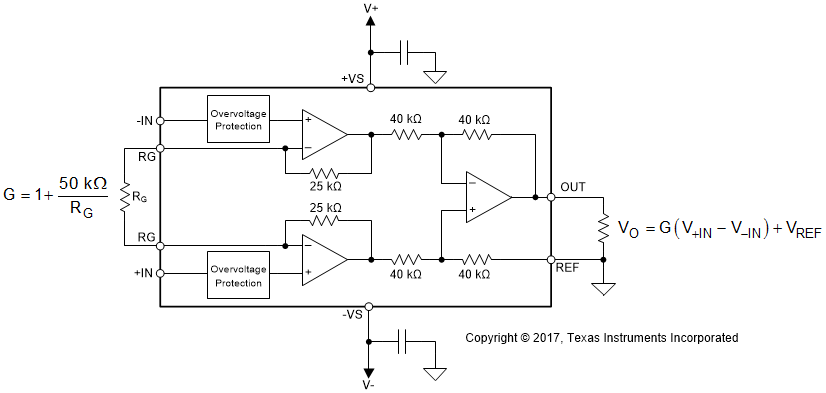ZHCSGR1A August 2017 – January 2018 INA828
PRODUCTION DATA.
7.3.1 Setting the Gain
Figure 52 shows that the gain of the INA828 is set by a single external resistor, RG, connected between the RG pins (pins 1 and 8).
 Figure 52. Simplified Diagram of the INA828 With Gain and Output Equations
Figure 52. Simplified Diagram of the INA828 With Gain and Output Equations
The value of RG is selected according to:
Equation 1. 

Table 1 lists several commonly-used gains and resistor values. The 50-kΩ term in Equation 1 comes from the sum of the two internal 25-kΩ feedback resistors. These on-chip resistors are laser-trimmed to accurate absolute values. The accuracy and temperature coefficients of these resistors are included in the gain accuracy and drift specifications of the INA828.
Table 1. Commonly-Used Gains and Resistor Values
| DESIRED GAIN | RG (Ω) | NEAREST 1% RG (Ω) |
|---|---|---|
| 1 | NC | NC |
| 2 | 50 k | 49.9 k |
| 5 | 12.5 k | 12.4 k |
| 10 | 5.556 k | 5.49 k |
| 20 | 2.632 k | 2.61 k |
| 50 | 1.02 k | 1.02 k |
| 100 | 505.1 | 511 |
| 200 | 251.3 | 249 |
| 500 | 100.2 | 100 |
| 1000 | 50.05 | 49.9 |